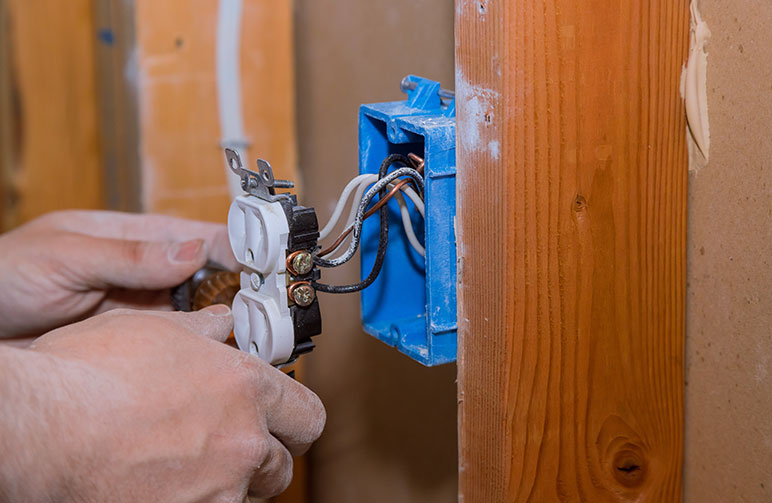Ask Your Question
Sidebar Form
Testimonials
"Stand up professionals."
Stand up professionals. Job was performed in a professional manner with educated electricians. Happy with the overall service. Honest, integral people, working to grow their local business. Keep up the great work George!

"Without a doubt the best!"
Doc Watts is without a doubt the best electric company in Central Florida. In a professional capacity, I have worked with them to complete electrical installations that range from simple breaker and receptacle replacements to full buildouts of industrial space and a generator as large as 625KWh. George and his crew are flexible, capable, and professional. Don't go here if you are looking for cheap and sloppy labor.

"Their customer service was awesome."
I would have to start by saying how good they treated me! Their customer service was awesome; something you rarely get in Florida. When the guy was done he cleaned up really good, he didn’t leave a mess; I was very appreciative of that! The moment I was even more impressed is when I saw the work he had done. Everything so well measured and placed! So they not only treat you good but also take pride in what they do! From now on these guys are my eletricians!!

"I can wholeheartedly recommend them!"
The team was A+ from the sales process to the final installation/handoff. Professional, efficient, always on time, always responsive, always do what they said they'll do.
This was a fairly major job, and after completion I can wholeheartedly recommend them.


Commercial Service
Electrical Rewiring Services
When you think of rewiring a house, do you have visions of an action movie hero sweating, holding a pair or shaky pliers, debating whether to cut the red wire or the blue wire? A home rewire project isn’t quite so life or death, but it is important that you hire professional rewiring electricians to handle the job. We have completed projects in Central Florida for years and we know our way around your home’s wiring - no dramatic soundtrack required.
The truth is that the more devices we use, the more electricity we need. Can you even count how many devices and appliances are plugged into your outlets right now? (It’s a lot!) Just like upgrading the capacity of your modem to allow more wireless connections, you need to upgrade your home’s wiring to allow more electrical devices to have power. And Doc Watts is here to help!
When our electricians rewire a house, several factors determine the scope of the project, and we want the homeowner to be part of the process as part of our mission to provide the best customer service. Together we’ll create a plan unique to your home’s needs.
What Kind Of Rewiring Will My Home Need?
1990s - Present
If you’re looking at options to rewire a house built in 1990 or after, your basic wiring infrastructure should be in good shape. We can install these upgrades with your home rewire project:
- Whole-house surge protector
- Home generator
- Electric vehicle charging station
- And more
1950s - 1980s
Homes built in the 1950s through the 1980s may require a complete home rewire, especially if the house has aluminum wiring. Homebuilders used aluminum wiring between 1960 through the early 1970s due to the high cost of copper.
Because aluminum is more malleable than copper, it contracts and expands with temperature change, and its weak connections can pose a significant fire risk. If you believe your home may have aluminum wiring, contact Doc Watts Electric to perform an inspection.
Additional upgrades to homes built during this time can include:
- Upgrades to service panels
- Replacement of two-prong outlets with three-prong outlets
- Adding branch circuits for code compliance
- And more
1900 - 1940s
When homes first had electricity, the only wiring method invented was knob-and-tube which placed wires in hollow spaces like walls, ceilings, and floors. Cable wiring came along in the 1930s, making homes safer and more energy efficient.
However, with the energy crisis of the 1970s, blown-in insulation became popular, filling the hollow spaces where the knob-and-tube wiring ran and creating a fire hazard.
If you have an older home, it should be inspected by a professional electrician to see if it should be rewired. Homes built before 1940 are excellent candidates for a complete home rewire project.
The Burning Question: Does Rewiring Require Drywall Removal?
Since most wires run through the interior of your walls, you may think that we have to cut holes in your walls to access them. If we can get to your attic, basement, or crawl space, we may be able to rewire a house without the need for significant drywall repairs.
Our rewiring electricians can make small openings at the tops and bottoms of your walls to allow access for the wires to run through or cut openings around the perimeter of the room to facilitate access without damage to the main part of your walls.
Benefits Of Rewiring A Home
A home rewire project can be a significant investment, and you want to be sure it’s worth it from a time, money, and safety standpoint.
- Time - How long it takes to rewire a house depends on the size of the home and the scope of the project, but a typical rewire can take anywhere from a few days up to a couple of weeks to complete.
- Money - The cost of a rewiring project will also depend on the size of the home and the scope of the project, but you may want to budget for a project of this size or consider a home equity loan.
- Safety - The main reason to rewire your home is to make it safer. Older wiring can present a fire hazard. You may also have trouble securing a home insurance policy if your wiring is outdated.

Our Rewiring Technicians Are Here For You!
Contact us to inspect your home’s wiring system, handle repairs, or complete an entire home rewire project. Our team of skilled rewiring electricians can do it all. Whether you need residential wiring services or a trusted commercial electricians in Orlando for your business, we’ve got you covered. Call the Doc when you have NO watts!

